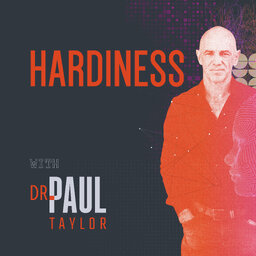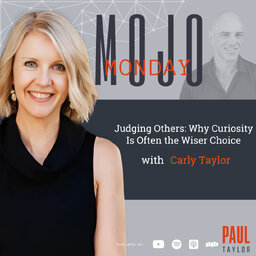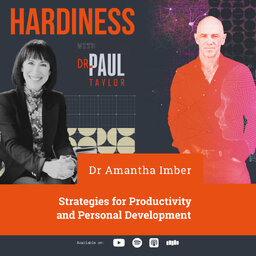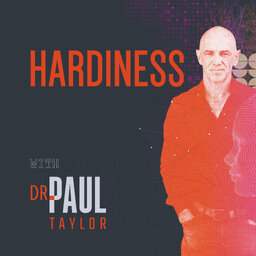Why You Need To Be A MITOchondriac Part 1 with Dr. Christabelle Yeoh
Journey deep into your cellular powerhouses - the mitochondria - in this eye-opening episode of The Paul Taylor Podcast. I sit down with Dr. Christabelle Yeoh, an Integrative Medicine Physician, with over 20 years of experience in clinical care, as she reveals how these ancient cellular components govern everything from brain health to athletic performance, and why they might be the key to understanding conditions like depression, diabetes, and dementia. Discover the fascinating evolutionary link between fructose and energy regulation, explore cutting-edge insights about oxygen therapy, and learn practical strategies to optimise your cellular health. Whether you're battling chronic health issues or simply want to understand the hidden mechanisms controlling your wellbeing, this conversation offers revolutionary insights that bridge complex biology with actionable solutions. Join us as we challenge conventional medical wisdom and uncover a fresh perspective on health and healing.
Key Topics:
-
Integrative Medicine Journey: From conventional to integrative medicine, including pursuing advanced nutrition education after medical residency
-
Metabolic Health & Disease Risk: Deep dive into metabolic syndrome's connection to major health conditions including cardiovascular disease, type 2 diabetes, and dementia
-
Mitochondrial Function & Evolution: Understanding mitochondria's vital role in cellular health, energy production, and their ancient evolutionary origins
-
Brain Energy & Mental Health: Exploring the brain's energy demands and how mitochondrial dysfunction impacts neurological and mental health conditions
-
Fructose & Metabolic Crisis: Analysing Professor Richard Johnson's research on fructose consumption, genetic adaptations, and mitochondrial energy production
-
Mitohormesis & Adaptive Stress: Understanding hormetic stressors and their beneficial effects on mitochondrial function and overall health
-
Oxygen Therapy & Performance: Hyperbaric oxygen therapy (HBOT) and intermittent hypoxia for chronic disease management and performance optimisation
Key Takeaways:
-
Look beyond blood glucose readings alone, as metabolic dysfunction can exist even with normal blood sugar levels. Request comprehensive metabolic testing as normal blood sugar levels don't guarantee metabolic health.
-
Reduce processed fructose intake to protect mitochondrial function and maintain healthy energy production.
-
Support your brain's high energy demands by prioritising mitochondrial health through lifestyle and nutrition choices.
-
Start gradually introducing beneficial stressors like controlled exercise, fasting, or temperature variation to strengthen your mitochondria.
-
Match your oxygen therapy to your health status: choose HBOT for chronic conditions or intermittent hypoxia for performance enhancement.
-
Take preventive action against metabolic syndrome before symptoms appear to reduce risk of serious health conditions.
-
Identify and eliminate lifestyle habits that force your body into chronic anaerobic metabolism.
Connect with Christabelle Yeoh:
Christabelle Yeoh on LinkedIn
Learn about Next Practice Genbiome Clinic
Learn about Mito Core Clinic
Connect with Paul Taylor:
Learn more about Paul Taylor
Paul Taylor on LinkedIn
Paul Taylor on Instagram
Paul Taylor on YouTube
Support the Podcast:
If you found this episode valuable, please consider subscribing, rating, and leaving a review on your preferred podcast platform. Your support helps us reach more people with important conversations like this one.
Share this episode with someone who might benefit from hearing it—emotional eating is more common than we think, and this conversation could make a difference in someone's life.
 Hardiness with Dr Paul Taylor
Hardiness with Dr Paul Taylor


